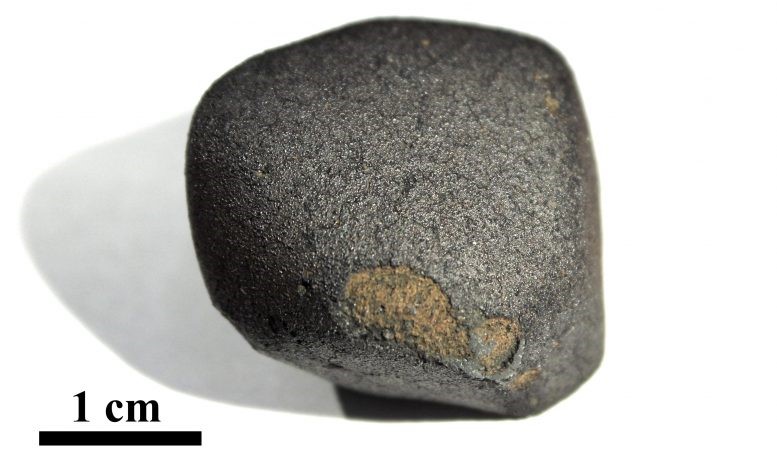
The Flensburg meteorite fell to Earth on September 12, 2019, in an event observed by hundreds of eyewitnesses from the Netherlands, Belgium, Germany, Denmark, and the United Kingdom. One day after the fireball was seen in the daytime sky, a small, 24.5-gram (0.86-ounce) meteorite was found in the garden of a home in Flensburg, Germany, near the border of Denmark. The homeowner reported the discovery of the meteorite to the International Meteor Organization.
The Flensburg meteorite was investigated by a cosmochemical research group coordinated by Addi Bischoff of the University of Münster (Germany) with participating scientists from Europe, Australia, and the United States. The team performed extensive laboratory analyses to describe the mineralogical, chemical, and isotopic composition of the meteorite. This meteorite is classified as a unique type of carbonaceous chondrite, a class of meteorites thought to represent the most primitive, volatile-rich materials from the early solar system. Well-preserved samples of carbonaceous chondrites (CC) are relatively rare in meteorite collections in part because they are fragile (weak) rocks that may not survive passage through Earth’s atmosphere. The internal structure of the Flensburg meteorite consists of relict chondrules, clusters of sulfide and magnetite grains, and carbonate minerals in a fine-grained matrix dominated by hydrated phyllosilicate minerals and organic compounds. Manganese-chromium (53Mn-53Cr) age dating of the carbonates in Flensburg show that aqueous alteration on its parent body occurred less than three million years after the formation of the first solid bodies in the solar system. These samples represent the oldest carbonates analyzed in any meteorite in which very early aqueous activity has been preserved. Other chemical and isotopic compositions of Flensburg also indicate that it is unique compared with known CC meteorite groups.
The Flensburg meteorite may sample one of the many small, water-rich parent bodies that delivered water to Earth in the early history of the solar system. The study of Flensburg will also be important for interpreting samples returned from asteroids Ryugu and Bennu by the Hayabusa2 and OSIRIS-REx spacecraft. Ryugu and Bennu are C-type asteroids, thought to be similar to CCs, and both show evidence for the presence of hydrated minerals like those in Flensburg. The discovery of unique CCs such as Flensburg expands our knowledge of the variety of CC materials in the solar system and has the potential to provide suitable analogues for C-type asteroids such as Ryugu and Bennu. READ MORE